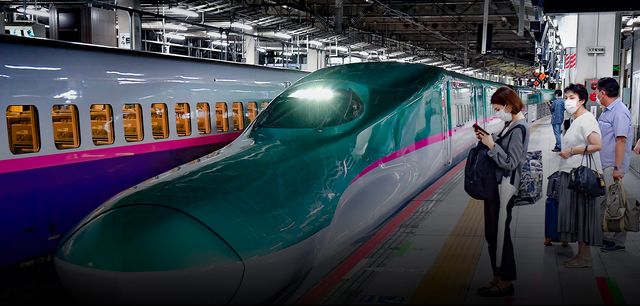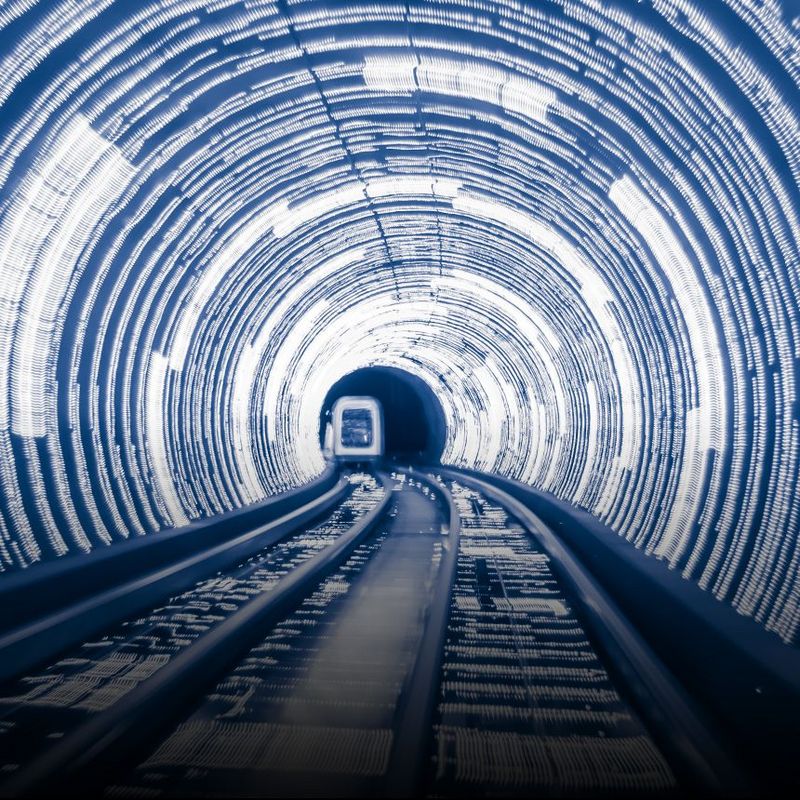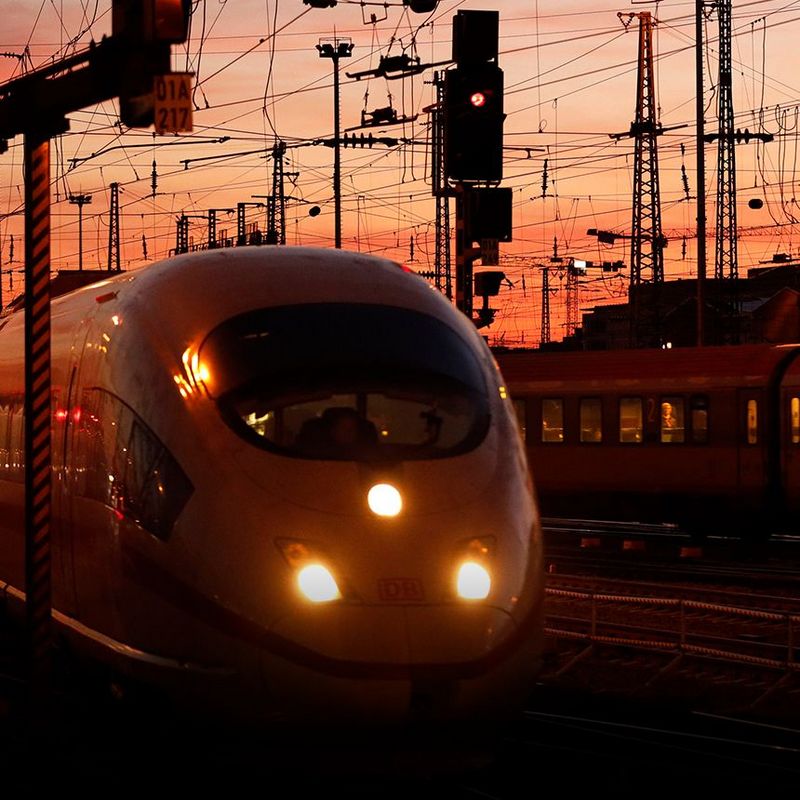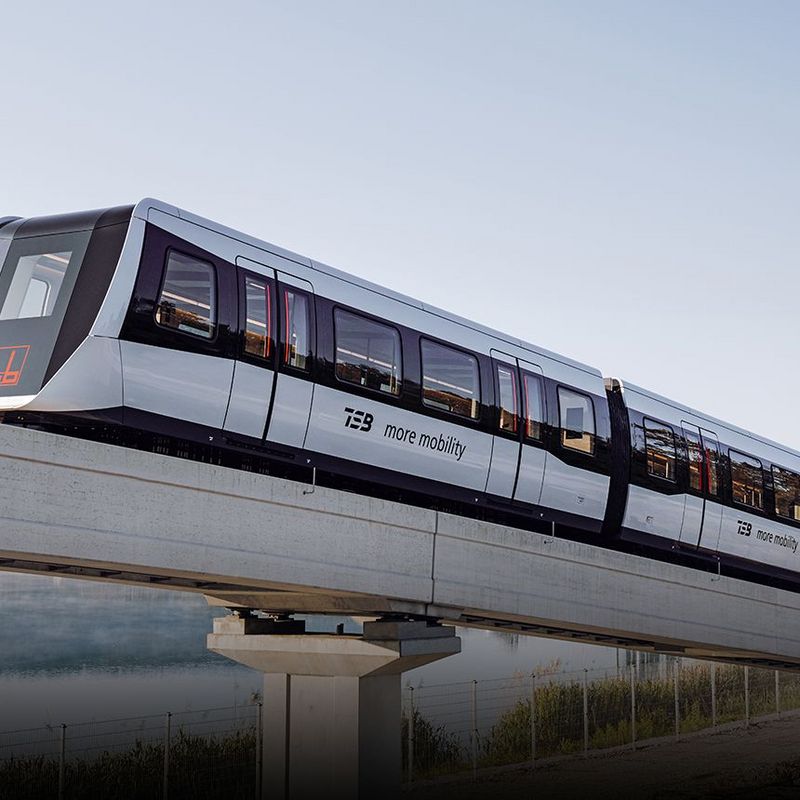16. December 2021
China has the most extensive rail network for high-speed trains in the world, whereas Japan holds the record for the most punctual. Both nations are now planning to significantly increase the speed of their trains – using rapid magnetic levitation trains to close the gap with air travel.
The rail network for high-speed trains in China is already some 38,000 kilometres in size. The second largest network in the world covers much of Spain but is barely one tenth as big. Running at a speed of around 350 kilometres per hour, China’s Fuxing is currently the world’s fastest train in regular operation – but it is likely to face competition in its homeland in the future. In July, the first high-speed maglev train rolled off the assembly line in the city of Qingdao: It is expected to reach speeds of 600 kilometres per hour, making it the “fastest land vehicle in the world”, according to state-owned Chinese company CRRC. The train is now set to be tested over a period of several years, with suitable tracks for maglev trains to be built at the same time. According to the Chinese government, Shanghai, Chengdu and other major cities and provinces of the country are planning fast connections by maglev train.
© Picture AllianceAt 600 kilometres per hour, the first high-speed maglev train of the Chinese state-owned CRRC is, according to its own claims, the "fastest ground vehicle in the world".
Faster than a short-haul flight
On routes of up to 1,500 kilometres, this system, which is being developed entirely in China, might even prove faster than flying. While it takes about two hours to get from Beijing to Shanghai by air, a passenger on a maglev train could expect to reach their destination in just 2.5 hours, and that measured from city centre to city centre. The first trains could be in operation in five to ten years. In technological terms, China wants to catch up with its neighbour Japan, where work is also being done on maglev trains.
Japan as role model
Japan launched the world’s first high-speed trains in 1964. The Shinkansen are now considered the most punctual and safest express trains on the globe. This is ensured by a completely separate and almost entirely fenced-in rail network, which the trains – unlike the ICEs in Germany – do not have to share with regional trains and freight traffic. Since the 1970s, Japanese engineers have also been working on their own maglev train system. In 2015, the maglev became the first train on earth to break the 600 km/h mark. With its 15-metre-long nose, the Maglev L0 is reminiscent of a pike on rails. This is intended to ensure optimal aerodynamics and also a quieter ride by preventing the loud bang that high-speed trains generate when they race into narrow tunnels at full speed.
Technologically speaking, the Japanese maglevs are already much further ahead and closer to series production than their Chinese counterparts, says Hans Vallée, railway expert at TÜV NORD. “After all, Japan has had test tracks for these vehicles for decades.”
© Picture Alliance"Pike on tracks": The shape of the speedy Japanese Maglev ensures optimal aerodynamics and - not insignificantly - a quieter ride.
Magnetic relief for the route from Tokyo to Osaka
The fact that the two nations are taking different technical paths has geological reasons, among others, according to Vallée. China has placed its faith in the Transrapid principle. The track acts simultaneously as a propulsion system: the motor uses what is known as a long stator, which “unrolls” along the length of the entire guideway, which consists of a single rail enclosed by the underside of the vehicle. In the Japanese system, the drive with its short stator is shifted into the vehicle, and the train sits in a U-shaped trench. Due to the magnet technology used, the Japanese suspension railways have a larger air gap between the track and the vehicle – thereby offering more of a cushion in the event of earthquakes, which are not uncommon on the island state.
The production version of the Japanese maglev is expected to reach a top speed of 620 and cruising speeds of 500 kilometres per hour. The 286-kilometre maiden route from Tokyo to Nagoya would then be covered by the new train in 40 minutes. Today, the Shinkansen takes twice as long. The second stage of the plan is to extend the route of the maglev train to Osaka. The connection between the three economic centres is now the busiest route in Japan and runs at full capacity with some 143 million passengers per year. The fast maglev train is intended to remedy this situation – and its passengers will be whisked largely through tunnels on an almost completely straight route through the Japanese Alps.
„A maglev train can travel at a significantly higher speed using the same energy as a conventional high-speed train, in part due to the lower friction losses.“
Race for export markets
The head-to-head race to create the fastest train on the planet is partly about prestige, but above all about export markets. The populations of numerous emerging economies are growing – and with them the need for efficient transport networks. Experts estimate the export potential of new train technologies at around 1.6 trillion euros. And since the maglev trains require relatively small amounts of electricity, they are also considered promising from a climate protection point of view. “A maglev train can travel at a significantly higher speed using the same energy as a conventional high-speed train, in part due to the lower friction losses,” explains train expert Hans Vallée.
The price question
Whether the maglev trains will actually become an export hit is far from clear. After all, to recoup the high additional costs compared to rail-bound trains would require colossal demand. And the maiden Japanese route from Tokyo to Osaka, with its concentration of megacities, is regarded globally as an absolute exception to the rule. “High-speed maglev trains require their own expensive infrastructure. Without subsidies, these systems wouldn’t be able to compete with air travel under current conditions, for example,” says Vallée. Japanese manufacturer JR Central has high hopes for the US market – and is bidding to construct a maglev line between Washington DC and New York. In return for the opportunity to establish its system internationally, it would forego any claim to royalties.
About Hans Vallée
© TÜV NORD
Hans Vallée is an expert in and appraiser of functional safety at TÜV NORD with a focus on railways. The doctor of Electrical Engineering is also recognised by the Federal Railway Authority as an expert in magnetic levitation technology.






